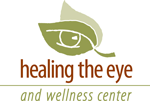Last week I treated a patient from Colorado who lives at 5000 feet who is suffering from macular degeneration. I have another patient who lives at 6500 feet in the White Mountains of Arizona who also has macular degeneration.. Several questions came into my mind. What are the affects low oxygen saturations at this altitude? Is this contributing to the development of macular degeneration? Will increasing his oxygen saturation help improve his vision? Could Hyperbaric oxygen treatment help his condition?
Oxygen is essential to good health and low oxygen saturation to tissue will cause disease. It is well documented in the medical literature that people with low oxygen saturation will have a greater incidence of macular degeneration. This includes living at high altitude, sleep apnea, tobacco abuse and chronic pulmonary disease. All of these conditions will reduce the oxygen saturation to the body.
Any condition that reduces the oxygen saturation needs to be corrected. All of our patients who are being treated for macular degeneration and other eye problems are evaluated for conditions that can reduce the oxygen saturation. Low oxygen saturations are more common at night especially with patients with sleep apnea, lung disease and chronic sinus infections. A simple test is done at night called a Nocturnal Pulse Oximetry. This measures oxygen saturations through out the night. Low values are a call to action to evaluate and treat the reason.
What are the affects at high altitude? At 5000 feet there is a 20% reduction in oxygen saturation, at 10,000 feet a 30% reduction. This reduction in oxygen saturation can be a problem especially if there are other conditions which are effecting the utilization of oxygen.
What is hyperbaric oxygen and can it correct low oxygen saturation? Henry’s Law states that gas dissolved in a liquid is proportional to its partial pressure. At sea level the atmospheric pressure is 760 mm Hg and the oxygen saturation is 21%. At higher altitudes there is a reduction in oxygen saturation; 5000 feet a 20% reduction and at 10,000 feet a 30% reduction. What happens when we increase the atmospheric Pressure?
By placing someone in a pressured hyperbaric environment, the increase in atmospheric pressure increases the partial pressure of the oxygen gas and thus forces more oxygen to be dissolved in the plasma. This saturation of oxygen in the blood allows the extra oxygen to be diffused or transported to the surrounding body tissues. Thus, oxygen transport by plasma is significantly increased under hyperbaric therapy (HBOT). At three atmospheres pressure, enough oxygen can be dissolved in the plasma to support the oxygen demands of the body at rest in the absence of any blood!
Here are some published articles supporting the use of hyperbaric oxygen in the treatment of eye disease.
Surv Ophthalmol. 2008 Mar-Apr;53(2):112-20.
The use of hyperbaric oxygen therapy in ophthalmology.
Hyperbaric oxygen therapy is a primary or adjuvant therapeutic method used in treatment of various acute or chronic disorders. Currently, eye diseases are among the off-label use of hyperbaric oxygen. However, there is an increasing body of evidence showing its safety and efficacy in retinal artery occlusion, cystoid macular edema secondary to retinal vein occlusion, scleral thinning and necrosis faced after pterygium surgery, orbital rhino-cerebral mucormycosis, nonhealing corneal edema, and anterior segment ischemia. Its potential to treat some blinding disease has also been pointed out in recent studies. This article constitutes an up-to-date summary of knowledge and therapeutic use of hyperbaric oxygen, and aims to contribute understanding of current and potential use of hyperbaric oxygen therapy in ophthalmology.
Dr. Robert Rowen, editor of 2nd Opinion Newsletter, mentions a report by Drs. Jansen and Nielson from Copenhagen, Denmark, which details two case histories of ARMD patients improving with HBOT. Both patients had cystoid macular degeneration. One patient, a type-2 diabetic, went from a visual acuity of 0.5 (difficulty reading), to 1.0, where he could read normally, with just one treatment. The second patient’s visual acuity was only 0.2; he could not read at all. After five sessions of HBOT in three days, his acuity was 0.9, where he could read normally. These Denmark doctors saw a “very rapid,” day-by-day improvement in the macula and recommend that treatment be started as early as possible, before there is irreversible damage.
Hyperbaric Oxygenation in the Treatment of Macular Degeneration. Split, Yugoslavia: Split Naval Medical Institute, pp. 1-4. Bojic L.
Dr. L. Bojic treated 4 patients with advanced macular degeneration and severe vision loss in a clinical trail with HBOT. Three of the four patients experienced a doubling of visual acuity after HBOT. Hyperbaric Oxygen Therapy
Hyperbaric oxygen therapy and age-related macular degeneration.
Undersea Hyperb Med. 2010 Sep-Oct;37(5):375;
Weiss JN.
Age-related macular degeneration (AMD) is a significant cause of visual loss in the United States and Western Europe. As the population ages, the prevalence rate of advanced AMD is expected to double by 2030. A one-hour session of hyperbaric oxygen therapy (HBO2) was used to treated a group of 14 patients with advanced AMD. Eight patients were treated at 1.75 ATA, and six patients were treated at 1.5 ATA for one hour. Significant improvements in visual acuity and/or visual field, with improvements in the activities of daily living were observed.
Acta Ophthalmol Scand. 2004 Aug;82(4):485-6.
Promising visual improvement of cystoid macular oedema by hyperbaric oxygen therapy.
Jansen EC, Nielsen NV.
Ophthalmic Surg Lasers. 2002 May-Jun;33(3):200-6.
Hyperbaric oxygen therapy reduces visual field defect after macular hole surgery.
Kurok AM, Kitaoka T, Taniguchi H, Amemiya T.
Department of Ophthalmology and Visual Sciences, Nagasaki University School of Medicine, Nagasaki City, Japan.







